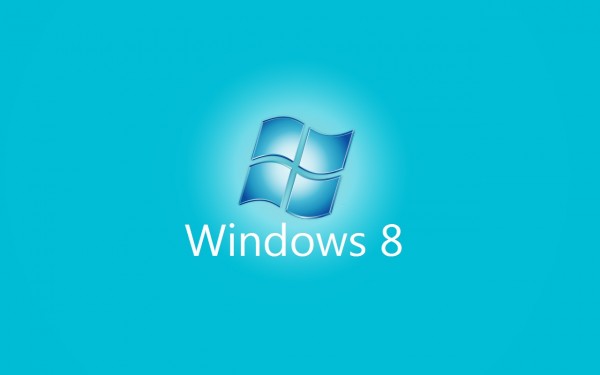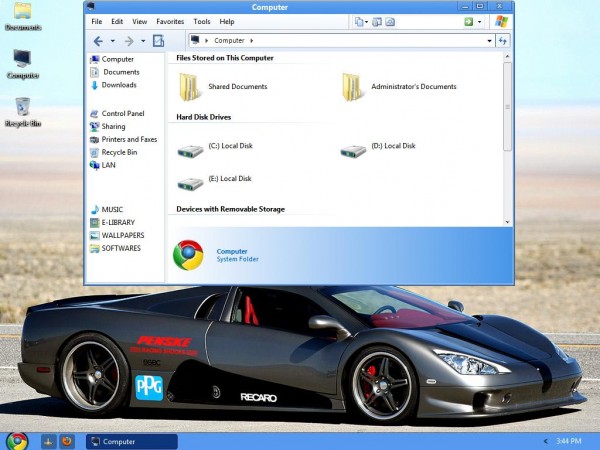The 2010 has been a good year in business term for Microsoft. The sales of Windows 7 were highly successful, with close to 300 million copies sold in 2010 and now used by 20% of PCs worldwide. However, in 2010, Apple exceeded Microsoft in gross revenue, partly due to the success of the iPhones, iPods and iPads. The year of 2010 has also seen a significant number of leaders leaving the company: Robbie Bach who headed the E & D division pushed into retirement following the failure of Windows Mobile, Stephen Elop moved to Nokia and finally Ray Ozzie seemed to fail in finding his place in Redmond.

The star of this year will undoubtedly be Windows 8. Windows 8 is expected to reach beta version this year to keep up with the Microsoft timetable for releasing new OS every three years. Because one year has elapsed between the first beta of Windows 7, we can deduce that the release of Windows 8 will occur in 2012 with a beta in 2011. What we know about Windows 8 is that it constitutes "the most risky bet for Microsoft" as stated by Steve Ballmer himself.
After the success of Windows 7, it will certainly be very difficult to convince users to upgrade their system. This is particularly true of companies that have waited almost a decade to leave Windows XP. Other factor that could explain a significant risk of Windows 8 is the threat of Chrome OS. With the new OS, Google tries a leap into the unknown that can potentially challenge the de-facto monopoly that Microsoft enjoys in the PC market.

Launched in October last year, this new system went through a modest beginning, but it already has a catalog of applications with more than 5000 titles, still far behind the iPhone or Android. Microsoft has promised frequent updates to close the functional gap that separates Windows 7 Phone with two major competitors.

After Chrome reaches 10% market share, Microsoft relies on Internet Explorer 9 to stop the bleeding and hope to regain some percentages. Unlike Google and the Mozilla Foundation, Microsoft relies on "Platform Preview" to share the developments of the engine by maintaining a pace of development of about 18 to 24 months. Internet Explorer 9 has been downloaded 20 million times. It supports HTML 5 and graphics acceleration to get better execution speed compared to its competitors. A public beta is expected this month at CES and a stable version probably in March.

The battle between Microsoft and Google in the cloud realm will intensify in 2011. Both sides have gained some success in 2010, and Microsoft is preparing a new package of Office Web applications, SharePoint, Exchange and Lync to slow its challenger down.

Kinect represents a step in the right direction, just as Windows 7 Phone, its medium- and long-term successes are not guaranteed and will depend on the Microsoft's reaction to rapid market changes.

Chrome OS promises a fully secure OS, which is integrated to a Web store. Many Internet users almost exclusively use Google products (Gmail, Google Apps, Google Maps, Google Search, Google Reader, Picasa, Android, Youtube and others), a notebook powered with Chrome OS can be a compelling proposition.
Google's system limitations are also obvious, as it stores sensitive user data on Google servers, the lack of native applications other than the Chrome browser and the need for a permanent connection Internet. But if Google has commercial success in 2011 with its cloud offering, the pressure will be on Microsoft to provide a Windows version that can integrate as closely to the Cloud as the Chrome OS.
What are steps Microsoft needs to take to address challenges in 2011?
This is the direction in which Microsoft chooses, by integrating "Windows XP mode" in Windows 7 to allow users run an application that is not compatible with Windows 7 environment.
After 25 years of existence, the Windows user interface needs to be refreshed. Even if Windows 7 has brought many interesting changes in this area, it still has many similarities to Windows 95 and perhaps Windows 3.1. It is the time to change the conventional paradigms by adopting features that are technically possible today, especially in voice control and movement recognition, for example by implementing Kinects-like technology. It would be surprising if Microsoft chooses not to seek to push its advantage in an area where it enjoys technological exclusivity. It is easy to imagine a future generation desktop PC with an optimized version of Kinects that is able to recognize user movements, along with voice commands. Some rumors point to the 3D interface support on Windows 8.

Windows Live Essentials 2011 is the first step towards integrating more closely with the cloud. Live Mesh in particular can now synchronize data between different devices and the cloud. Windows 7 Phone is also built into this architecture, not to mention Office Web Application and Facebook integration with Windows Live.
Live Mesh can also now synchronize bookmarks in Internet Explorer and Office settings (styles, custom dictionaries, and others). With these possibilities, Microsoft could allow any native application to synchronize settings across multiple machines, which make life much easier for users to work on several machines.
With the launch of the Apple's App Store, Microsoft will have no choice but to launch its own store dedicated to native Windows applications.

Beyond the Windows Phone 7, Microsoft will have to work hard to develop a convincing strategy to deal with the iPad and Android. It could be relatively simple for Microsoft to develop a variant of Windows 7 Phone designed for tablets, thus reproducing the evolution of IOS on iPhone and iPad.
2011 will be a good year to judge Microsoft's ability to respond to the onslaught of its two formidable competitors, Apple and Google. Microsoft has demonstrated its tenacity with the release of Windows 7 Phone and Kinects. Hopefully, Steve Ballmer's presentation at CES 2011 will bring many more pleasant surprises.
0 comments:
Post a Comment